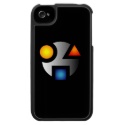|
|
Reference type: Journal
Authors: Ekdahl KN, Lambris JD, Elwing H, Ricklin D, Nilsson PH, Teramura Y, Nicholls IA, Nilsson B
Article Title: Innate immunity activation on biomaterial surfaces: A mechanistic model and coping strategies.
Publication date: 2011
Journal: Advanced Drug Delivery Reviews
Volume: 63
Issue: (12)
Page numbers: 1042-1050.
DOI: 10.1016/j.addr.2011.06.012
Alternative URL: http://www.sciencedirect.com/science/article/pii/S0169409X11001864
Abstract: When an artificial biomaterial (e.g., a stent or implantable pump) is exposed to blood, plasma proteins immediately adhere to the surface, creating a new interface between the biomaterial and the blood. The recognition proteins within the complement and contact activation/coagulation cascade systems of the blood will be bound to, or inserted into, this protein film and generate different mediators that will activate polymorphonuclear leukocytes and monocytes, as well as platelets. Under clinical conditions, the ultimate outcome of these processes may be thrombotic and inflammatory reactions, and consequently the composition and conformation of the proteins in the initial layer formed on the surface will to a large extent determine the outcome of a treatment involving the biomaterial, affecting both the functionality of the material and the patient's life quality. This review presents models of biomaterial-induced activation processes and describes various strategies to attenuate potential adverse reactions by conjugating bioactive molecules to surfaces or by introducing nanostructures
Template and target information: Review - bioactive surfaces and immunity
Author keywords: Autoprotection, Biomaterial, Coagulation, Complement, Contact activation, Inflammation, Innate immunity
|


 MI cryptic logo iphone4 speckcase
MI cryptic logo iphone4 speckcase







 SMI tie pink
SMI tie pink







 SMI logo apron
SMI logo apron






